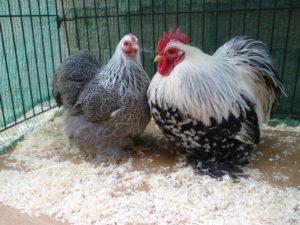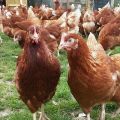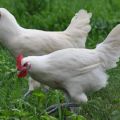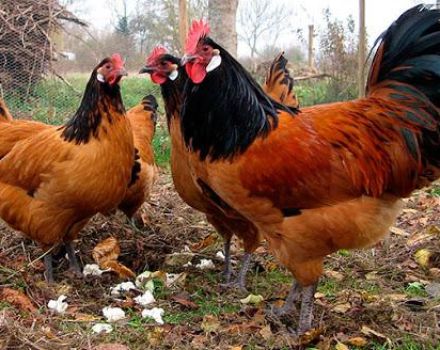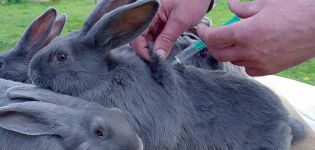Description, characteristics and conditions of keeping chickens of the Redbro breed
Redbro is a variety of chickens ideal for breeding. The bird is known not only for high-quality meat, but also for its high egg production. Today, Redbro chickens are profitable for both small farmers and large industrial organizations. Let's get acquainted with the characteristics, conditions of keeping and the peculiarities of caring for a bird of this breed, as well as measures to prevent its diseases.
Origin story
Chickens of the Redbro breed were bred in England by crossing representatives of the Malay and Cornish species. Thanks to the inherited traits, the bird turned out to be large in size, with a strong immunity and a good-natured character. Today, chickens of this breed are popular not only among farmers, but also in industry, as they are universal in terms of the volume of meat and eggs.
Description and characteristics of the breed
Redbros are grown for quality meat. Due to the special structure of the muscles, the bird practically does not have a fat layer.
Appearance
At a young age, the bird has a light color, which leads to difficult breed recognition.
Breed signs:
- large head;
- bright red plumage, tight to the body;
- small wings;
- red comb and leaf-shaped lobes;
- clear, short beak;
- dense strong legs.
Chickens acquire a bright color after the first molt.
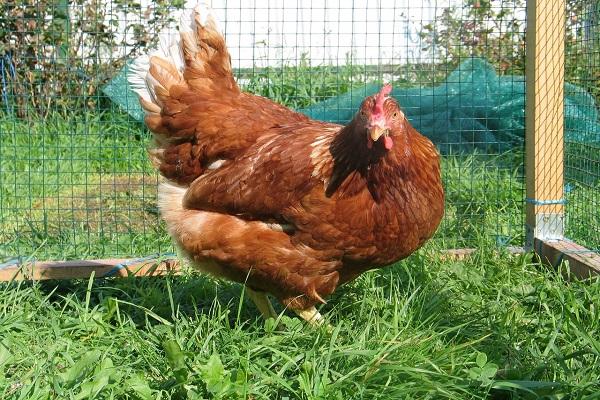
Weight of chickens and roosters
Birds of the Redbro breed are considered large. They inherited this feature from their fighting ancestors. The weight of an adult chicken is 3-3.5 kg, and that of a rooster is 1 kg more.
Birds are unpretentious in keeping, quickly gain weight on regular food. At the age of one month, chickens weigh 1-1.2 kg, by three months - 2.5 kg. They reach the main weight after six months.
Character
Despite their fighting ancestors, Redbroughs have a peaceful character. They easily get along with other species of birds. However, chickens do not like confined spaces. Keeping them in cages will not work. For them, spacious open-air cages with a walking area are created.

Productive qualities
The bird belongs to the profitable breeds. By the age of 5-6 months, the female begins to rush. A chicken yields up to 300 eggs a year, weighing 60-75 g. In addition, the breed is valued for dietary meat with a low fat content. The average weight of a broiler carcass is 3-4 kg.
Chickens go to slaughter at the age of a year, since during this period egg production decreases, and it is unprofitable to raise the bird further.

Pros and cons of Redbro chickens
The Redbro breed is prized among farmers.Breeding these birds has certain advantages.
Pros:
- fast weight gain;
- easy adaptation to the conditions of detention;
- unpretentiousness in food;
- good health, endurance;
- non-aggressive character;
- nutritious, dietary meat;
- high egg production.
Chickens are easy to keep. They do not require any special feed. They have a strong immune system and can walk even in sub-zero temperatures without losing productivity. The breed is characterized by a high survival rate of chicks, regardless of whether they are incubated or hatched in an incubator.
The breed has one drawback - the color of the young. Redbro chicks do not look different from common chicks, so inexperienced breeders can be deceived when buying birds.

Features of the content
Redbro chickens are unpretentious in keeping and quickly adapt to the environment and place of residence. But there are some requirements that must be met for the safe breeding of birds.
Chicken coop requirements
The chicken coop should be spacious. 10 sq. m inhabited by no more than 20 individuals. The room for keeping is made in a square shape, with a ceiling height of 1.8-2 m. The floor is covered with a flooring of dry grass, perches and nests with a depth of at least 30 cm are formed at the back wall.
The birdhouse should be well-ventilated, but free of drafts, and the flooring should be dry. It is necessary to change the filler at least once a week.

Temperature, humidity, lighting
Despite the unpretentiousness of the breed, birds must always be kept warm. In chicken coops in winter, the temperature should not drop below +6. If necessary, you can artificially heat the room. In summer, the temperature should not be allowed to rise above 27 degrees. To eliminate overheating in the houses, vents are made.
Humidity is an important factor in the correct development of offspring. In the wet season, it is necessary to change the flooring more often, to dry the air by artificial methods.
In order for the chickens to rush continuously, there must always be enough light in the chicken coops. In the summer, a 14-hour day is achieved naturally, in winter the birds turn on the lamps. 10 sq. m - 60 W. Lighting is installed on the ceiling, in the area of feeders and drinkers.

Walking yard
Bird walks are very important. Breeders need to think about the location, shape and size of the aviary in advance. For manufacturing, a galvanized metal mesh is usually used, fixed on wooden blocks. Aviaries are installed next to the chicken coop. At least 2 square meters are allocated per individual. m. area.
Installation of feeders and drinkers
In the summer, when the bird spends all day outside, it is worth installing feeders and drinking bowls in the same place. In winter, chickens are in the hen house all day, so the sources of water and feed are transferred to the premises. The containers are attached to the wall at a short distance or placed on a shelf. You should not put feeders and drinking bowls on the floor, as birds often climb into them, scatter grain and trample it.
Feeders can be different, replenished manually or automatically. But it is worth considering that it is impossible to overfeed the bird, it is especially harmful for layers.
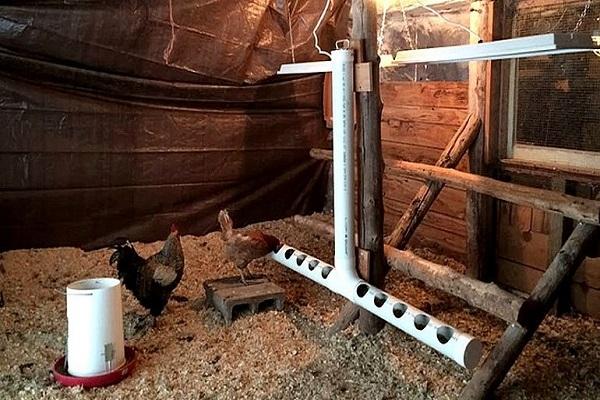
Bird feeding
Despite the fact that Redbros are unpretentious in food, the bird's diet should be balanced. High performance in growing poultry is achieved by introducing compound feed. Vegetables, fruits, herbs are mandatory components of feathered dishes. In summer, chickens can hunt for insects and grass while walking.
It is important to consider the amount of feed per animal, depending on the age. A chicken 2 weeks old is given at least 100 g of grain.
The rate increases in accordance with the development of the bird and reaches 300 g by 6 months.
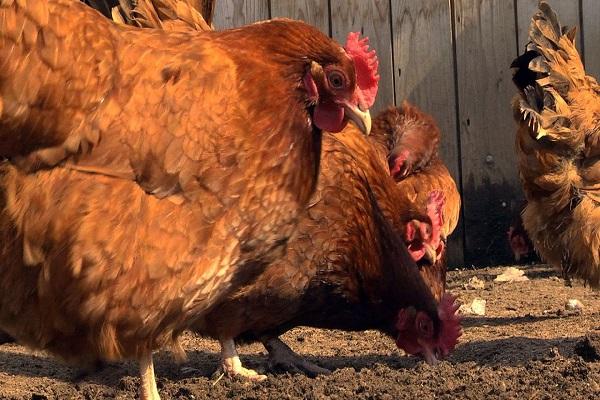
Reproduction and breeding
Redbro chickens lend themselves well to breeding. Laying hens have a pronounced maternal instinct and conscientiously hatch the clutch. However, after puberty, birds do not produce good offspring. Chicks are born weak and small. Therefore, incubators are often used for breeding birds.
Tips:
- for breeding, choose eggs of the first clutch, of the same size;
- before placing in the incubator, wash the eggs from contamination and wipe them with a cloth dipped in potassium permanganate;
- control the temperature and humidity in the incubator.
The time of day at which the chicks appear depends on the time they are placed in the incubator. Chicks are born with light brown plumage. At first, babies should be kept in a box, the bottom of which is covered with warm material. The room temperature should not be lower than 30 degrees. Every day it must be lowered so that by the age of one month the chicks are ready for cool conditions.
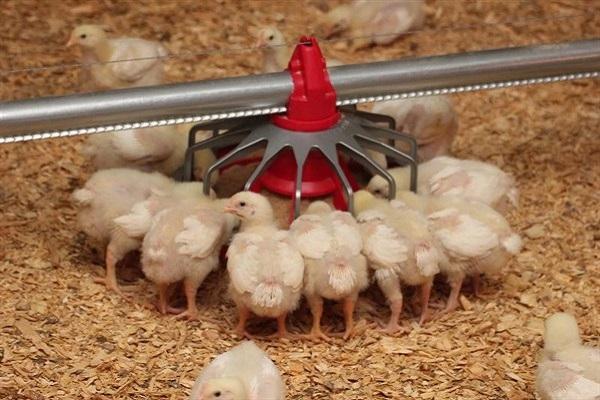
For the first days, you need to feed the chickens with soft foods rich in proteins. They are transferred to broiler feed no earlier than a week later.
Frequent diseases and their prevention
Despite the good immunity, the bird is susceptible to some diseases.
Kinds:
- Typhus.
The disease occurs as a result of the penetration of infection into the body of the bird. The bird does not eat, it develops vomiting, loose stools. The body temperature rises. The pet looks weak and inactive. The disease is transmitted from individual to individual. It is treated with antibiotics.
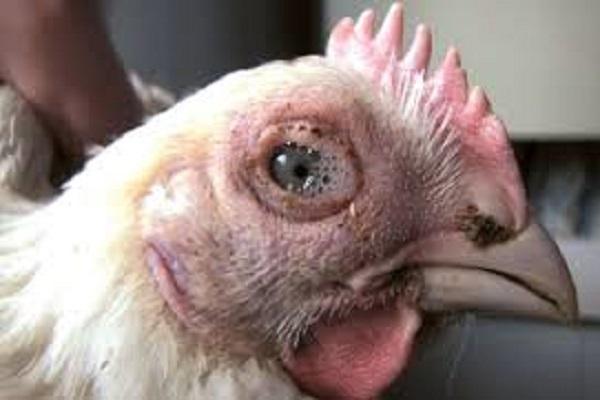
- Coccidiosis.
Birds are infected by parasitic insects. Of the signs, an increase in body temperature, diarrhea, apathy are distinguished. They are treated with antiparasitic drugs by adding them to food and water.
- Salmonellosis.
The disease develops as a result of untimely vaccination of individuals. Signs are manifested by edema around the eyes, weakness and apathy of the feathered. Chickens are treated with the drug Furazolidone, adding it to the drink during the week.
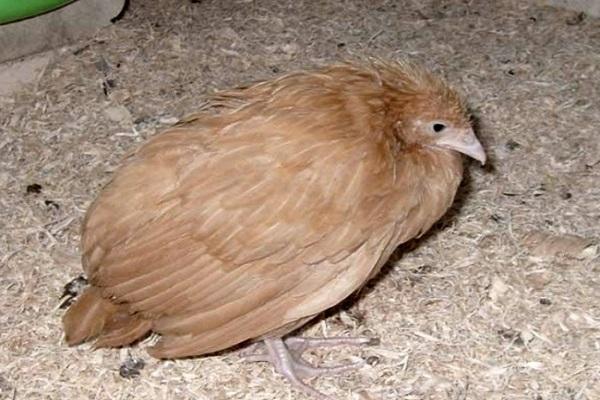
- Pasteurellosis.
A symptom of the disease is the blue discoloration of the scallop and earrings. Mucus is secreted from the nose, the bird stops feeding and moving. Diarrhea appears, body temperature rises. Treat chickens with sulfamides.
To exclude the occurrence of infections and inflammations, every spring in the chicken coops, a complete cleaning is carried out, the walls of the room are covered with slaked lime to eliminate harmful microbes. From skin parasites in the houses, containers with ash are installed in which the birds swim. Vaccination is carried out every 3 months.

